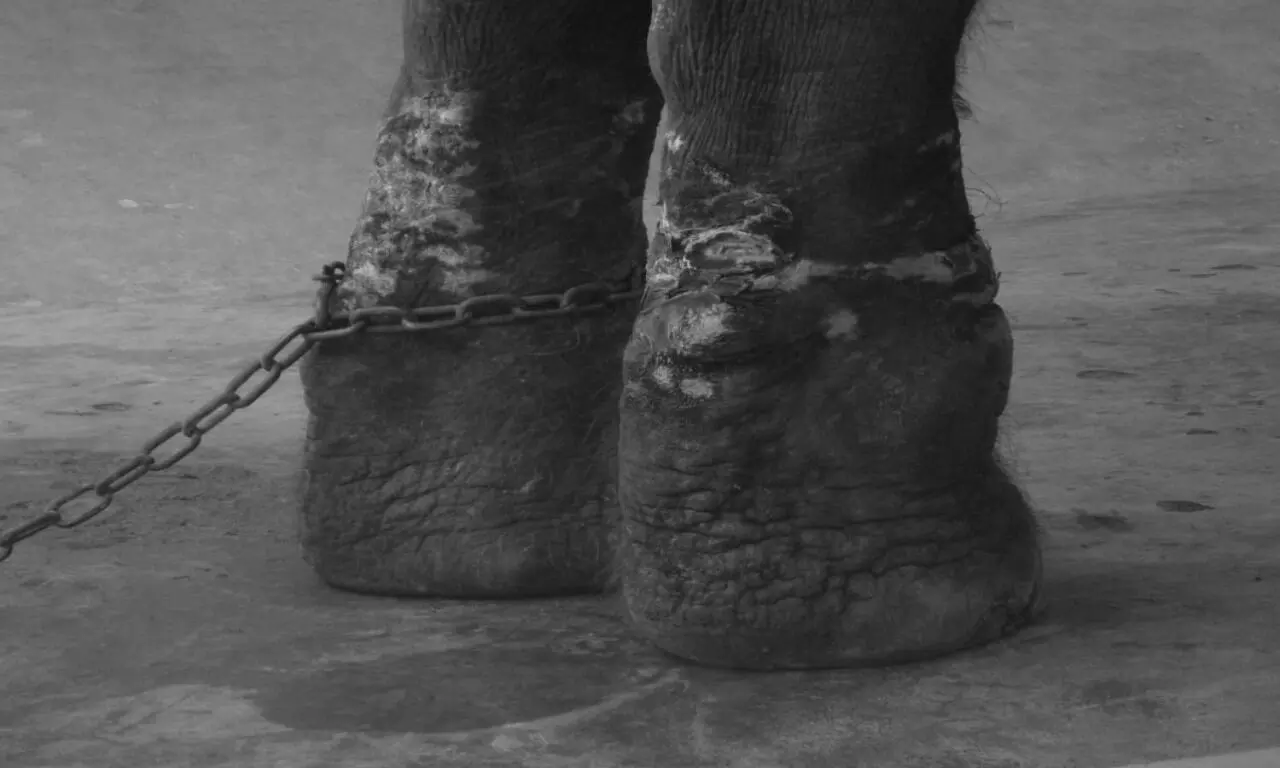Brutal thrashings, barbaric training methods: Abysmal state of captive elephants in India
The Indian Wildlife Protection Act 1972 classifies animals in various scheduled as per the nearness to extinction. Schedule-1 animals are those that cannot be hunted or possessed. Tigers are one such animal and so are elephants. However, there are certain exemptions in the law
By Amrutha Kosuru
Hyderabad: Sandhya, an elephant, spent 40 years in captivity being beaten up and treated ruthlessly before she was finally rescued by a group of activists. Like Sandhya, there are approximately 3,500 captive elephants in India.
The Indian Wildlife Protection Act 1972 classifies animals in various scheduled as per the nearness to extinction. Schedule-1 animals are those that cannot be hunted or possessed. A person is liable to the harshest penalties for violation of the law under this schedule. Tigers are one such animal and so are elephants.
However, there are certain exemptions in the law and because of these exemptions, there is a bustling trade of wildlife, especially of elephants, in India (and the world over). One of such exemptions for elephants includes- 'Except for Cultural Reasonss' as per the law. An elephant conservationist who doesn't want to be named due to life threats says that due to this exemption, elephants are captured by private owners, temples, and many others.
And so Sandhya was captured from her home- the wild and auctioned off in various melas. In her 40 years as a captive elephant, it is hard to ascertain where she had been and the torture she was put under. When she was found by a group of activists, Sandhya was difficult to handle. She was aggressive. It took a long time for her to recover from the trauma she was put through.
She had several marks of beatings along with battered feet. "Possibly from carrying people around and poor hygiene conditions," the conservationist says.
Like other captive elephants, Sandhya too had to learn some commands to interact and respond to humans. The conservationist says when an elephant is captured, it is given very little food. "Just enough food to be kept barely alive but not enough to resist," he says. After this, the elephant is forced to learn around 150 basic commands.
To learn each command it is beaten on its forehead and other parts of its body. For example, to teach the elephant to lift its leg, the trainer hits the animal on its feet until it learns to lift its leg "by mistake".
"In a similar manner, several other commands are taught in the most infuriating ways," the conservationist says. "Additionally, elephants that carry humans in processions are made to learn an additional 500-600 commands," he adds.
After capture, they are taken to training facilities, where they are subject to abject atrocities. Starvation, beatings, confinements are some of the lots of the elephants during training. The conservationist explained that at the end of the training, a relationship of "Master" and "Slave" is established.
"Once this relationship is established, the elephant is now ready to serve the "master" in various capacities for 50-60 years of its remaining mortal life; like, street begging, performing bone-crushing acts in circuses, to giving "ashirvadam" (blessing) in a temple, to carrying logs, to giving rides, and more," the conservationist says
Standing in confined spaces and on hard grounds causes the elephant immeasurable suffering which is both physiological and psychological. Some of the physical problems are hip sores/abscesses, foot abscesses, cracking of nails, deformation of limbs, etc., and some of the psychological ones are, suicidal tendencies, boredom, trauma, fear, etc.
"As time goes by, the elephant begins to suffer from Stockholm syndrome (the captive begins to like their captors," the conservationist explained. This is problematic for people who want to help them because the elephants like the mahouts more (because of the metal condition and they don't know any better) and wouldn't allow anyone else near.
Furthermore, bull (Male) elephants greatly suffer when they come of age and are sexually aroused. "Since they are not in the jungle to fulfill their needs, the testosterone supercharged bulls become extremely aggressive. due to this aggression, the bulls are bound front and back legs and not allowed to move," he says. The maximum they can move is 20 feet for a period of four months, the elephant is locked up and left to stand in their own feces.
"It is at this time that most captive elephants die due to poor hygiene conditions," he says.
However, should the elephant survive, another different kind of hell awaits them. The expert says that in this case, around nine to 10 people surround it and begin beating it ruthlessly to ensure the elephant doesn't attack humans. The expert says that a lot of elephants die during this ordeal.
"There is an old saying that when an elephant is alive, it will fetch 1,000 coins. When an elephant dies, it will fetch 1,000 coins," the conservationist says pointing out that this is true as the animal's tusks are sold for several lakhs.
A more compassionate approach
However, elephants do not have to be treated so ruthlessly. There is another compassionate way to handle elephants and it is called positive reinforcement training. "Elephants are kind animals. They can be communicated with and anyone can do this," says the expert.
"People say there is a man-animal conflict but that is wrong. It is a human invasion. We are invading the elephant's home and that is driving them into cities, fields, and railway tracks. This needs to stop. It is important to note that there is no need for captive elephants," he says adding, "Elephants, like all other animals, are meant to be free."
The physical and mental trauma that an elephant goes through is immeasurable.
The conservationist estimates that there are around 100 captive elephants in Telangana and Andhra Pradesh. The highest number of captive elephants in the country is in Assam and Kerala.